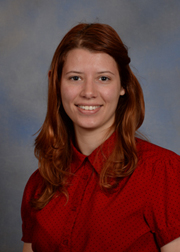Constraining the Properties of Thin, Low-mass Circumstellar Shells Around Type Ia Supernovae
Chelsea Harris, University of California, Berkeley

Type Ia supernovae (SNe Ia) are used to measure cosmological distances to high enough precision that they led to the discovery of cosmic acceleration and the inference of dark energy. Given the level of precision with which we can use SNe Ia, it is surprising to consider that we still do not know what stellar systems create these events; the star that explodes is a carbon-oxygen white dwarf, but a binary companion seems to be required and the nature of the secondary star is a mystery. Constraining the circumstellar medium (CSM) of SNe Ia is one way to distinguish between the different possible secondary star candidates. To measure the properties of CSM, we typically look at signatures of the fast-moving SN ejecta impacting the slow-moving CSM and creating a shock. Therefore, interpreting observations requires modeling of this interaction with a wide array of possible CSM configurations. Such models do not yet exist in a generic form.
In almost all SNe Ia, no CSM is detected. Is this because it is not there, or did we just not observe the interaction? In Harris, Nugent & Kasen (2016) we create a grid of models that would be difficult to detect: very low density CSM that is geometrically thin, so that the signal is dim and lasts only briefly. Such thin, low-mass shell could be created, for instance, through a nova. We hydrodynamically model such systems and calculate corresponding radio synchrotron light curves. We find that these light curves can be easily used to infer shell properties. By using approximations to the light curves, it is straightforward to analyze nondetections and for the first time place quantitative limits on shell properties.
Abstract Author(s): C.E. Harris, P.E. Nugent, D.N. Kasen


